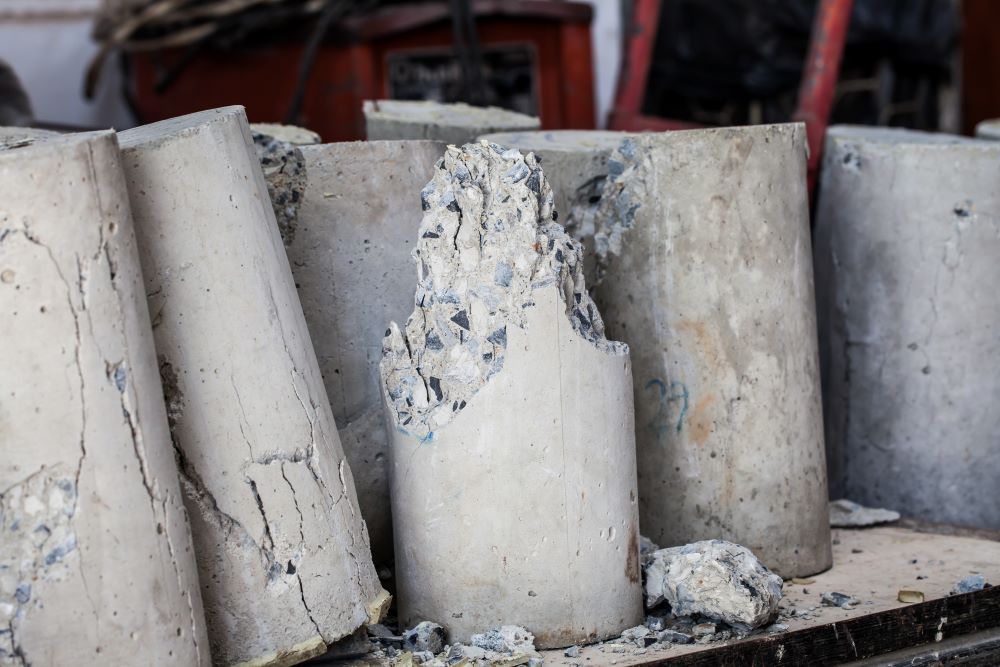Compressive strength is the amount of pressure concrete can handle without failure when it is being compressed. This is the opposite of tensile strength, which is the load that concrete can handle without failing when it is being stretched apart. Compressive strength is a key factor in how well your concrete was made and how well your fence will handle what is thrown at it.
What is the Compressive Strength for Precast Concrete Fences?
Originally, manufacturers worked with concrete with a 28-day compressive strength of 3,000 psi. That was the strength that was determined that would preserve the concrete integrity and allow the concrete fence to serve its purpose.
Manufacturers quickly realized there was a problem. The earliest manufacturers can unmold and handle the precast concrete is when the concrete reaches 2,500 psi. With a target compressive strength of 3,000 psi, the concrete would take several days to reach that strength. For precast concrete to compete with the cast in place concrete, it needs to be much quicker than that. It needs to be ready to unmold in one day. In order to reach 2,500 psi in one day, manufacturers figured out they needed to shoot for compressive strength of 4,000 psi to 5,000 psi. This is now the industry standard.
How is Concrete Compressive Strength Tested?
Compressive strength is tested by creating test cylinders. These are simply 4 by 8-inch or 6 by 12-inch cylinders of concrete. The concrete is removed from the cylinder mold after 24 hours. The cylinders are tested after 7 days and 28 days by applying a load to the cylinder until the cylinder fails. The load that the cylinder failed at is considered the compressive strength.
The industry standard for testing concrete, according to the National Precast Concrete Association Quality Control Manual for Precast Concrete Plants, is to collect four cylinders every 150 cubic yards of concrete or, at a minimum, once per week. Two of the cylinders are tested at 7 days. This gives you an early idea for what the strength will be once fully cured. The second batch of cylinders are tested at 28 days.
Low Permeability Equals High Durability
Compressive strength goes beyond just how much weight you can pile on the structure. Permeability is the ability of water to move through a material. It is very important in precast concrete production to making a highly durable product. When water can move through concrete in high volumes, it can cause corrosion of internal reinforcement and lead to damage of the precast wall.
A high compressive strength equals a low permeability. A common way to increase the compressive strength is by adding more concrete — increasing the density.
Manufacturers Going Above and Beyond
Precast manufacturers are starting to increase the compressive strength up to 6,000 psi and even beyond. This increases the durability of the concrete while also decreasing production times. Some are even using chemical additives and steam to get up to two batches per mold per day.
If you are ready to install a precast concrete wall or fence of your own, contact American Precast Concrete, Inc, today for your custom quote.







